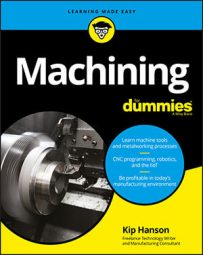- Revision control: Regardless of the manufacturing environment, product specifications often change. So, too, do work instructions, quality procedures, shipping dates, and so on. Updating this information is much easier if you don't have to chase piles of paper across the shop floor.
- Document security: Most shops consider internal documentation such as part drawings confidential. Even if they don't, it's almost certain their customers do. What's to prevent a disgruntled employee or corporate spy from walking off with reams of valuable information?
- Disaster recovery: The building burned down last night? Major bummer. Not only do you need to start rebuilding, but the in-process quality documentation, hand-written notes on job routers, marked-up packing slips — all gone. Isn't it far better to digitize all those bits of ephemeral information and store it on a backed-up server before the smoke begins? Doing so will save months in reconstruction.
- Searching and replacing: So, the customer just called. She wants to update the specification level on every one of her assembly instructions from Revision B to Revision C. The document is referenced on every drawing and work instruction in the plant. With paper, you're looking at weeks of work and a lingering worry that you might not have found everything. The paperless factory? It's a half-hour job.
- Saving space: Anyone who's saved job travelers, shipping receipts, copies of invoices, and so on, knows: They take up a lot of space. And finding something in all those boxes? Good luck. Wouldn't you rather have scanned copies of your important documentation tucked away on a hard drive (or stored in the cloud), accessible by anyone with the password?
- Cost avoidance: Here's the big kahuna. Paper costs money. Not just the price paid for the acres' worth of dead trees you have laying about, but the cash spent on printers, toner cartridges, and the IT people to manage it all, not to mention waste disposal and shredding costs. Granted, electronic storage space isn't free, but it's much less expensive than the paper alternative.
If you don't already have one, you'll also need a wireless network. Don't cheap out on this with a couple of $50 routers from the local office supply store, as there's no faster way to incite rebellion over the new paperless project than a weak Wi-Fi signal; hire a professional to install a robust wireless network.
You'll need some document scanners, especially in the shipping and receiving area. You might need some new software for making portable document format (PDF) or equivalent files. You'll probably need some new user accounts for the network, and maybe some for your enterprise resource planning (ERP) or product data management (PDM) system, depending on where you store everything.
And you'll definitely need some training. Not everyone is a computer jock like you, and without intense employee training followed by a sign-off session agreeing that, "Yes, I get it, now let me go back to work," some among the team will find ways to unhinge the machine.
Once you're done with all of that, get rid of the printers, as there are sure to be some diehards who simply can't live without paper. Taking away the printers eliminates any temptation. It also cuts a lot of money from the IT budget (the IT manager might disagree, but it will). Sounds scary? Maybe so, although everyone probably thought the first CNC machine was scary, too.

